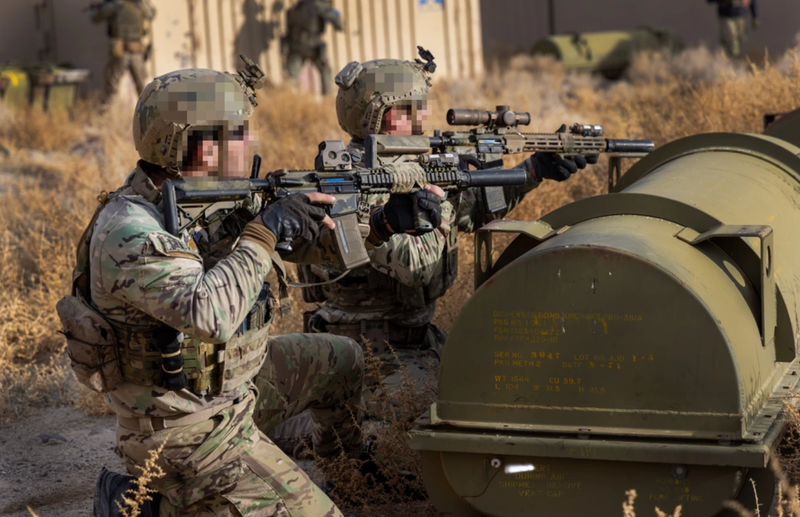
In late January, East Coast-based Navy SEALs conducted a training exercise dubbed joint Exercise Dragon Trident 1 on Beale Air Force Base in California alongside several units stationed there including the 9th Security Forces Squadron (SFS), 9th Medical Group (MDG) and 9th Operations Support Squadron (OSS).
The exercise was unique in that it involved the SEALs conducting a mock invasion of Beale Air Force Base after inserting using military free-fall parachuting techniques. Beale is home to a number of different strategic military assets, including Global Hawk drones, the U2 spy plane, and a mid-air refueling unit.
The units assigned to the base knew that the SEALs were coming and had prepared dug-in defensive positions. The SEAL incursion was supported by fixed-wing and rotary-wing assets, but whether they were able to penetrate the airbase and complete their assigned objectives is something the military doesn't appear to be forthcoming with.
"After getting set up, we knew an attack was coming, but we didn’t know where it would come from," explained Senior Airman Aaisha Banks, 9th Security Forces Squadron cyber security liaison. "This is new training for most of us, and it helps us prepare for real-world encounters by showing where our deficiencies are and where we can improve."
The day after the SEAL raid on Beale, the special ops and conventional units conducted joint training at the range, and then on day three the roles were reversed. This time the SEAL raid force was holding the air base and the conventional units had to recapture it. This afforded the two elements to experience both attacking and defending, learning where their vulnerabilities were.
Such training is not necessarily commonplace for the SEAL teams, one of the Air Force senior leaders explained. "In November of 2022, [a Navy SEAL] and I were classmates at the Joint Special Operations Forces Senior Enlisted Academy (JSOFSEA) and had numerous conversations about the importance of joint operations and bringing our units together to train," said Chief Master Sgt. Christopher Ricks with the 9th SFS. It took 14 months after the initial idea between classmates, but eventually, Dragon Trident was born.
"It’s always easy to say ‘no’ but it takes a lot of effort to say ‘yes’ and follow through on your promises and put forward the effort to make this type of training happen,” a SEAL senior enlisted leader explained.
"We wanted a near-peer adversary to present a difficult target set for our final end-of-cycle training exercise before going downrange," the SEAL leader continued. "The planning during the exercise was very in-depth and detailed. Upon assessing the base defense that was established, it forced the assault team to change the game plan on the fly, presenting a whole different level of complexity, which provided outstanding training value."
